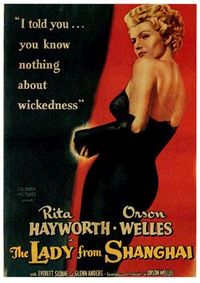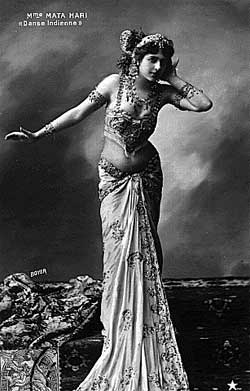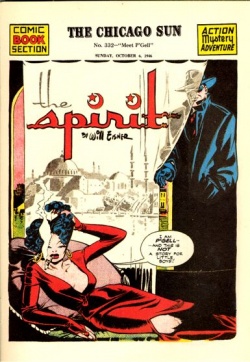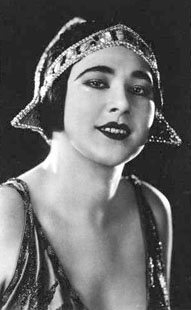Femme fatale: Difference between revisions
m (Text replacement - "film noir" to "film noir") |
m (Text replacement - "Marlene Dietrich" to "Marlene Dietrich") |
||
| Line 155: | Line 155: | ||
*'' Les Vampires '' ( 1915 ) - Musidora | *'' Les Vampires '' ( 1915 ) - Musidora | ||
*'' A Fool There Was '' ( 1915 ) - Theda Bara | *'' A Fool There Was '' ( 1915 ) - Theda Bara | ||
*'' The Blue Angel '' ( 1930 ) - Marlene Dietrich | *'' The Blue Angel '' ( 1930 ) - [[Marlene Dietrich]] | ||
*'' The Maltese Falcon (1931 film) - [[Bebe Daniels]] | *'' The Maltese Falcon (1931 film) - [[Bebe Daniels]] | ||
*'' Rain '' - [[Joan Crawford]] | *'' Rain '' - [[Joan Crawford]] | ||
*'' Red Dust '' - Jean Harlow | *'' Red Dust '' - Jean Harlow | ||
*'' The Devil is a Woman '' ( 1935 ) - Marlene Dietrich | *'' The Devil is a Woman '' ( 1935 ) - [[Marlene Dietrich]] | ||
*'' The Maltese Falcon '' ( 1941 ) - Mary Astor | *'' The Maltese Falcon '' ( 1941 ) - Mary Astor | ||
*'' Double Indemnity '' ( 1944 ) - Barbara Stanwyck | *'' Double Indemnity '' ( 1944 ) - Barbara Stanwyck | ||
Revision as of 18:01, 27 June 2022
Click here for Movie Star category page |
A femme fatale (plural: femmes fatales) is a stock character in European drama and a stereotype usually of a villainous woman, who would deceptively mislead and ensnare the hapless hero and/or other males in order to gain some end they would not freely help her achieve.
The phrase is French for "deadly woman", or "fatal woman". The femme fatale would try to achieve her hidden purpose by using her feminine wiles (beauty, charm, sexual skill), and thus she is typically portrayed as exceptionally well-endowed with these qualities. However, in some situations, lying or coercion could be just as effective.
Although typically villainous, femmes fatales have also been known to be antiheroines in some stories, and sometimes they even repent and become heroines by the end of the tale. (See e.g. Bell, Book and Candle.) Today, the archetype is generally seen as a character who constantly crosses the line between good and evil, acting unscrupulously despite social norms and any overt allegiances she may have to the hero.
In social life, the femme fatale would torture her lover in an asymmetrical relationship, denying confirmation of her affection, let alone the opposite, 'till the point of the male becoming obsessed, addicted and exhausted, and incapable of rational decisions or managing one's personal life.
History
The femme fatale has existed, in one form or another, since time out of mind in the folklore and myths of nearly all cultures. Some of the earliest examples include the Sumerian goddess Ishtar and the Biblical Delilah. During the late nineteenth and early twentieth century, the femme fatale became ubiquitous in Western culture and can be found in the works of Oscar Wilde, Edvard Munch, and Gustav Klimt. This may have been a reaction to women's movements and the changing role of women at the time. With the introduction of film noir in the 1940s, the femme fatale flourished in pop culture. Examples include espionage thrillers, and in a number of adventure comic strips, such as The Spirit by Will Eisner, or Terry and the Pirates by Milton Caniff.
The femme fatale is sometimes portrayed as a sort of sexual vampire; her dark appetites were thought to be able to leech away the virility and independence of her lovers, leaving them shells of their former selves. On this account, in earlier American slang femmes fatales were often called vamps", short for "vampire". A classic portrayal of a femme fatale is given in Lawrence Durrell's Alexandria Quartet in the character of Justine.
In opera, the femme fatale is usually played by a dramatic mezzo-soprano. More often in musical theater, the femme fatale is played by an alto. The femme fetale is sometimes the foil or the enemy of the ingenue and/or the damsel in distress.
Some argue that the figure has a male counterpart. Some examples could be Don Juan, Heathcliff from Wuthering Heights, many of the heroes in Lord Byron's books (termed the "Byronic hero"), as well as such diverse characters as Billy Budd, Count Dracula, Tadzio in Death in Venice, Georges Querelle in Jean Genet's Querelle of Brest, James Bond, and Tom Ripley in Patricia Highsmith's "Ripley" novels.
Although often depicted in ancient texts as a symbol of corruption, in more recent times the femme fatale is often portrayed in fiction as a symbol of free will for women and unrestrained passion.
There has been greater attention to sexist and male-biased points of view in older fiction in recent centuries. Many women state that many of the so-called villainous women in literature are merely seeking an improved enjoyment and quality of life, personal satisfaction, or metaphysical self-actualization, which has raised questions about the view of women as subservient and unworthy of free will in the eyes of some men in history. A big point of debate is the subject of Lilith, the mythological first wife of Adam before Eve. In most texts depicting Lilith, many point out that her only real crime against Adam and God was voicing her own opinion. She is sentenced to hell, and God creates a more subservient new woman for Adam in the form of Eve.[1]
In modern times the Femme Fatale has enjoyed a better image. Even Femme Fatales in older texts have been at times looked upon in a different, more sympathetic, light.
In modern media, the Femme Fatale archetype can actually be seen quite often. Popular examples of this character type are the movies Nikita and Moulin Rouge!, to name a few, and a number of assorted media from video games to comic books. Elektra, a character from the Marvel Comics universe is arguably a femme fatale and is quite a well known character in comic circles, as is Catwoman from the various Batman stories. The female Ninja (the Kunoichi) depicted in countless media are very well known and legendary for being trained in femme-fatale techniques as well as martial-arts methods, so that they are able to use their sexuality as fluidly as their deadly assassination skills. Another show that emphasises strongly on this is Desperate Housewives, where the main female characters use questionable means to get what they want.
 The femme fatale was a central character in film noir, usually tempting the male protagonist to his inevitable doom. Pictured: Rita Hayworth in The Lady from Shanghai. |
Famous femmes fatales
Both fictional and factual are listed.
Modern Fictional characters
Famous femmes fatales
Modern Fictional characters
"Femmes fatales" in Mythology
|
Historical figures
FilmsNumerous notable actresses have portrayed femmes fatales in film; several have become closely identified with such roles.
Games
|
References
Bram Dijkstra has written two books that discuss the Femme fatale-stereotype at great length:
- Idols of Perversity: Fantasies of Feminine Evil in Fin-De-Siecle Culture, < ISBN:0195056523 Buy it from Amazon.com >
- Evil Sisters: The Threat of Female Sexuality in Twentieth-Century Culture, < ISBN:0-8050-5549-5 Buy it from Amazon.com >
See also
External links
- The Femme Fatale Throughout History (History Television)
- The Femme Fatale in Film Noir
- High Heels on Wet Pavement: film noir and the femme fatale
- Marling, William: Hard-Boiled Fiction (Case Western Reserve University. Updated 2 August 2001.)
Chat rooms • What links here • Copyright info • Contact information • Category:Root


